THE SHORT STORY’S tendency to carve away at a story or a character, leaving only a sharp impression, lends itself gracefully to film. In honor of the 86th Academy Awards, here’s a list of five Oscar-nominated short story adaptations.
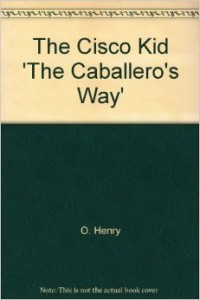
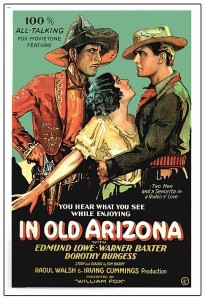
1. O. Henry’s “The Caballero’s Way” (1907): The Cisco Kid origin story paints a portrait of a cold-hearted killer who winds his way through a 10-mile prickly pear cactus patch to see his woman, described as “half-Carmen, half-Madonna […] and the rest, let us say, was humming-bird,” only to find himself betrayed. But it’s not O. Henry without a twist, and he serves up a dastardly one here. The film In Old Arizona (1928) was the first adaptation of this character who would go on to become a popular sidekick in Westerns — making the Cisco Kid one of the first and longest running Latino characters in American popular culture.
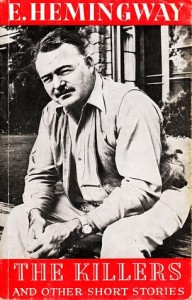
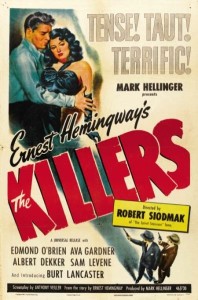
2. Ernest Hemingway’s “The Killers” (1927): First published in Scribner’s magazine in 1927, “The Killers” is one of the most anthologized of Hemingway’s Nick Adams stories — and one of his leanest works, where the young Nick Adams runs into two hit men looking to kill a retired boxer named Olde Anderson. “You’re a pretty bright boy, aren’t you?” — the goons keep asking Nick with increasing menace. The 1946 film version picks up after Olde Anderson (Burt Lancaster’s debut) is murdered, with an insurance agent as the vehicle to deliver all the back-story that Hemmingway keeps from us.
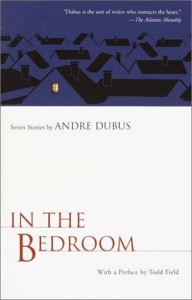
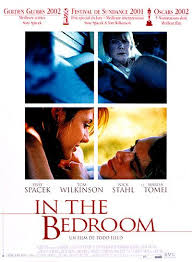
3. Andre Dubus’s “Killings” (1979): My favorite aspect of Dubus is his ability to drag us through scenes of slow torturous action (read his short story “Blessings” for one of the best shark attacks in literature); in “Killings,” an only son’s murder by an estranged husband begets another. The 2001 film In the Bedroom captures Dubus’s heartbreaking tone, and a scene between Marisa Tomei — who plays the murdered son’s girlfriend, and Sissy Spacek, the grieving mother, —might be one of the most memorable confrontations in cinematic history.
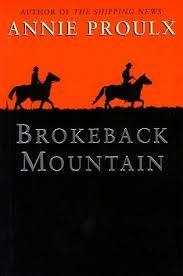
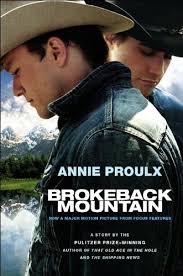
4. Annie Proulx’s “Brokeback Mountain” (1997): Annie Proulx charts the love life and inner turmoil of one Ennis Del Rey, Wyoming ranch hand, over a 20-year relationship with Jack Twist, with such precision and quiet that you would never think a film could do it justice. While director Ang Lee and actor Heath Ledger were robbed of Oscar wins, Larry McMurtry and Diana Ossana brought home the statue for their artistry in adapting the story for the screen. Proulx famously said that Ledger “got inside the story more deeply than I did.” This adaptation, like the big skies it captures on film, expands the story into a larger piece of art.
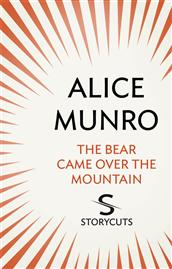
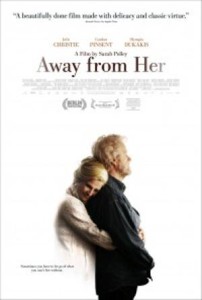
5. Alice Munro’s “The Bear Came Over the Mountain” (1999): In Nobel Prize winner Alice Munro’s story, Fiona develops Alzheimer’s Disease and moves into a nursing home, where she takes up with another man — also married. The pleasures of the story come in Munro’s delicate language, even as she explores this rugged, unknown territory where the brain has gone adrift. “She was a tall, narrow-shouldered woman, seventy years old but still upright and trim, with long legs and long feet, delicate wrists and ankles,” she writes of Fiona, “[…] hair that was as light as milkweed fluff had gone from pale blond to white somehow without Grant’s noticing exactly when.” Canadian actress and director Sarah Polley was only 27 when she adapted Munro’s story herself in and directed Julie Christie in the role of Fiona in 2006’s Away From Her. Polley’s more recent films, Take This Waltz (2012) possibly the best film from a women’s point of view about marriage, and the stunning documentary Stories We Tell (2013) make her one of the most exciting filmmakers today.


1. O. Henry’s “The Caballero’s Way” (1907): The Cisco Kid origin story paints a portrait of a cold-hearted killer who winds his way through a 10-mile prickly pear cactus patch to see his woman, described as “half-Carmen, half-Madonna […] and the rest, let us say, was humming-bird,” only to find himself betrayed. But it’s not O. Henry without a twist, and he serves up a dastardly one here. The film In Old Arizona (1928) was the first adaptation of this character who would go on to become a popular sidekick in Westerns — making the Cisco Kid one of the first and longest running Latino characters in American popular culture.
¤


2. Ernest Hemingway’s “The Killers” (1927): First published in Scribner’s magazine in 1927, “The Killers” is one of the most anthologized of Hemingway’s Nick Adams stories — and one of his leanest works, where the young Nick Adams runs into two hit men looking to kill a retired boxer named Olde Anderson. “You’re a pretty bright boy, aren’t you?” — the goons keep asking Nick with increasing menace. The 1946 film version picks up after Olde Anderson (Burt Lancaster’s debut) is murdered, with an insurance agent as the vehicle to deliver all the back-story that Hemmingway keeps from us.
¤


3. Andre Dubus’s “Killings” (1979): My favorite aspect of Dubus is his ability to drag us through scenes of slow torturous action (read his short story “Blessings” for one of the best shark attacks in literature); in “Killings,” an only son’s murder by an estranged husband begets another. The 2001 film In the Bedroom captures Dubus’s heartbreaking tone, and a scene between Marisa Tomei — who plays the murdered son’s girlfriend, and Sissy Spacek, the grieving mother, —might be one of the most memorable confrontations in cinematic history.
¤


4. Annie Proulx’s “Brokeback Mountain” (1997): Annie Proulx charts the love life and inner turmoil of one Ennis Del Rey, Wyoming ranch hand, over a 20-year relationship with Jack Twist, with such precision and quiet that you would never think a film could do it justice. While director Ang Lee and actor Heath Ledger were robbed of Oscar wins, Larry McMurtry and Diana Ossana brought home the statue for their artistry in adapting the story for the screen. Proulx famously said that Ledger “got inside the story more deeply than I did.” This adaptation, like the big skies it captures on film, expands the story into a larger piece of art.
¤


5. Alice Munro’s “The Bear Came Over the Mountain” (1999): In Nobel Prize winner Alice Munro’s story, Fiona develops Alzheimer’s Disease and moves into a nursing home, where she takes up with another man — also married. The pleasures of the story come in Munro’s delicate language, even as she explores this rugged, unknown territory where the brain has gone adrift. “She was a tall, narrow-shouldered woman, seventy years old but still upright and trim, with long legs and long feet, delicate wrists and ankles,” she writes of Fiona, “[…] hair that was as light as milkweed fluff had gone from pale blond to white somehow without Grant’s noticing exactly when.” Canadian actress and director Sarah Polley was only 27 when she adapted Munro’s story herself in and directed Julie Christie in the role of Fiona in 2006’s Away From Her. Polley’s more recent films, Take This Waltz (2012) possibly the best film from a women’s point of view about marriage, and the stunning documentary Stories We Tell (2013) make her one of the most exciting filmmakers today.
¤
LARB Contributor
Neelanjana Banerjee’s fiction, poetry, and essays have appeared or are forthcoming in Prairie Schooner, The Liner, PANK Magazine, The Rumpus, World Literature Today, The Literary Review, Asian Pacific American Journal, Nimrod, A Room of One’s Own, Desilit, and the anthologies: Desilicious (Arsenal Press, 2003), The HarperCollins Book of English Poetry (HarperCollins India, 2012), and Breaking the Bow: Speculative Stories Inspired by the Ramayana (Zubaan Books, 2012). She is a co-editor of Indivisible: An Anthology of Contemporary South Asian American Poetry (University of Arkansas Press, 2010).
LARB Staff Recommendations
True Detective, Season 1: "Seeing Things"
The foreign object at the center of HBO's True Detective
Animals and Monarchs: Inside AFI Fest 2013
Its 27th iteration now concluded, AFI Fest has reaffirmed its status as the most worthwhile film festival in Los Angeles.
Did you know LARB is a reader-supported nonprofit?
LARB publishes daily without a paywall as part of our mission to make rigorous, incisive, and engaging writing on every aspect of literature, culture, and the arts freely accessible to the public. Help us continue this work with your tax-deductible donation today!
:quality(75)/https%3A%2F%2Fdev.lareviewofbooks.org%2Fwp-content%2Fuploads%2F2012%2F01%2FFiction_Image.jpg)